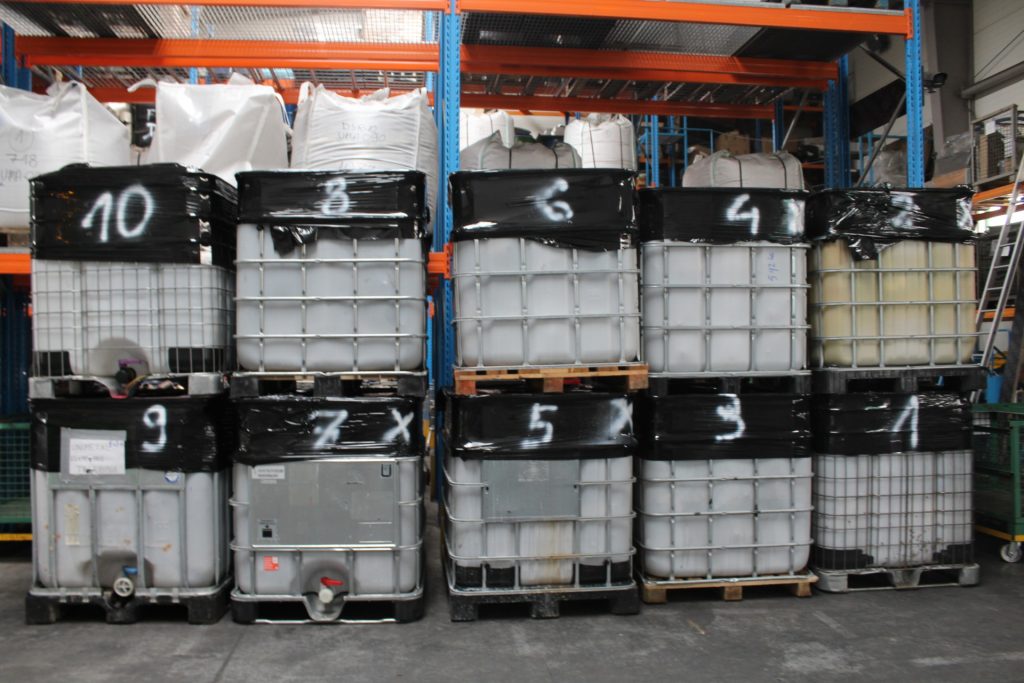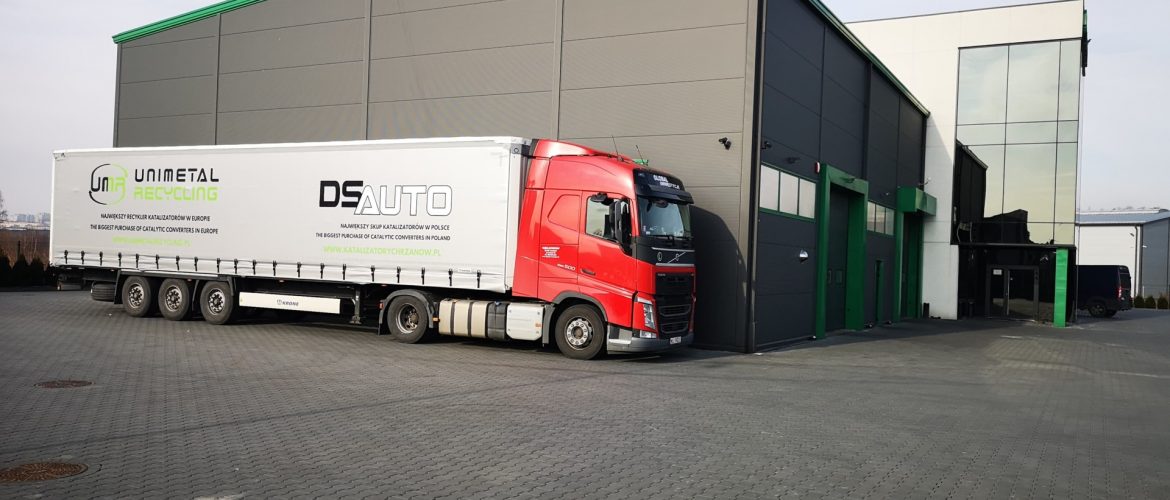It happened that potential customers wanted to use our services, but they did not have the opportunity to transport catalysts directly to purchase. Therefore, we have introduced the option of transporting devices with a maximum weight of 24 tons in one batch. We act in accordance with the law all the time – this is also the issue of cross-border shipments of waste, which is why we would like to introduce you to the regulations related to this type of transport.
Waste and displacement – definitions
First, let’s explain what the waste is according to the rules. Waste as defined in art. 3 of the Act of 14 December 2012 on waste, any substance or object the holder of which is being disposed of, is going to get rid of or to which he is obliged to get rid of. And moving waste means literally transporting waste destined for recovery or disposal, which has been planned or takes place between countries. The movement is said from the moment of dispatch until disposal.
Legal acts
The rules on transboundary shipment of waste are regulated by the so-called Convention
Basel based in Basel on March 22, 1989. In the European Union, the obligation to control the transport of waste across borders is implemented by Regulation (EC) No. 1013/2006 of the European Parliament and of the Council of 14 June 2006 on shipments of waste. In addition, in Poland we still have the Act of 29 June 2007 on international shipments of waste, which supplements these legal acts with additional provisions. In practice, anyone who wants to transport waste between countries must follow the rules contained in all the above documents.
Waste classification
The Basel Convention classifies waste for the needs of transboundary movements, dividing them into green – other than dangerous, amber letters – dangerous, or potentially dangerous, and unclassified wastes that are subject to procedures such as those from the amber list.
Transport of catalysts
A company that wants to cross-border waste transport should follow one of two possible procedures: the notification or information procedure.
There are wastes for which written permission will be required. Regarding catalysts, however, an information procedure that is generally applicable to:
• waste from the green list,
• waste destined for laboratory tests with a mass not exceeding 25 kg,
• waste mixtures included in Annexes IIIA and IIIB to Regulation No. 1013/2006,
• waste listed in Annex IIIB to Regulation No. 1013/2006.
The used catalysts are included in the green list.
What does it mean? Such waste may be transported without the permission of the Chief Inspector of Environmental Protection, but information obligations have been imposed on those organizing the shipment. Everyone who sends waste and their consignee must conclude a written contract prior to the commencement of transport in which they describe the principles of the entire process. The contract template is not arbitrary and must meet the requirements of art. 18 para. 2 of Regulation No. 1013/2006.
The contract does not have to be attached to transport, but it should be kept in order to be able to show it at the request of control authorities. The contract must already apply when the transport begins. It should result in a commitment that if the transport – and hence the recovery – is not carried out according to the assumptions, or if the transport proves to be inconsistent with the applicable law, the transport organizer will take back the waste, or provide another way to recover. It must also ensure that, if necessary, it will provide a legal place to store them.
Before shipment, you must also fill out the document – Annex VII to Regulation No. 1013/2006 – for this the person arranging the transport is responsible, in this case our company. This annex includes, among others, data of carriers, waste producers, actual amount of waste, date of shipment, recovery process and identification code. The document must be attached to the transport.
Annex VII should have completed fields 1-11 and be signed in box 12. After receiving the waste, the recipient fills in field 13 or 14. The recipient’s address will always be the address where the recovery installation or laboratory is located. It can not be the address of the office or company headquarters. We should store the attachment for three years. If transport is carried out with the use of several transporters, it must be forwarded along with the transport to other entities providing shipping. The organizer of the shipment is responsible for proper preparation of the document.
The only situation in which we can depart from the transport procedures listed in Regulation No. 1013/2006 is the situation in which we carry waste from the green list, which are intended for recovery, and waste listed in Annex IIIA and IIIB, whose weight does not exceed 20 kg .
The spent catalysts that we transport in our daily work can be described by one of the following two codes –
16 08 01 – to which catalysts include gold, silver, rhenium, rhodium, palladium, iridium or platinum (excluding 16 08 07, i.e. catalysts contaminated with dangerous substances)
16 08 03 – spent catalysts containing other transition metals or their compounds not included in other groups

In addition, the company that performs the transport of waste should have a current entry to BDO in the field of waste transport – Section VII.
After creating the Database on products and packaging as well as waste management, transport permits issued on the basis of a given act on waste from April 27, 2001 were valid up to the date of filing an application for entry in the BDO register – ie until July 24, 2018 r. After this date, waste transport may be carried out after obtaining the above entry.
Only waste specified in Section VII of the entry may be transported.
The rules that apply to the transport of waste are set out in the Regulation of the Minister of Environment of 7 October 2016 on specific requirements for waste transport and apply from January 24, 2010 onwards.
THE MOST IMPORTANT OF THEM:
The obligation to mark the vehicle carrying the waste in a visible place, located at the front.
2. Order to have a document confirming the type of transported waste
* waste transfer cards / waste sales invoice / basic waste characterization / document on cross-border shipments of waste.
At Unimetal Recycling, we have adapted our activities to the current regulations.
ESM standards
Regardless of whether we transport hazardous waste or waste from the green list, if we carry out international transport of waste, we must ensure compliance with ESM standards – that is, rational ecological management.
In practice, this means that we should take all possible steps to ensure that transport will not have any negative impact on health and the environment. In order to familiarize with the ESM guidelines in detail, it is best to refer to institutions that are responsible for complying with them – in Poland, the Ministry of Environmental Protection and the CIEP are such an institution.
Records of waste
In the case of cross-border waste transport, the Waste Transfer Card, or KPO, is not used. It applies only to the territory of Poland. During transport, waste must be accompanied by Annex VII to Regulation 1013/2006.
So if we send waste to Poland from another country, then we do not need to use KPO. However, if we take over the waste, we must keep the records under general rules and apply the KEO, ie the Waste Record Sheet. Its design is defined in Annex 2 to the Regulation of the Minister of the Environment of December 12, 2014 on the templates of documents used for the purposes of recording waste.
However, if we export waste from Poland, we do not need a KPO document. It is not required for cross-border transport. The documents we need to use depend on the country where our waste is heading.
Who can check the shipment of waste?
It is worth remembering that the control of environmental protection, customs services of the Republic of Poland, border guards, inspection of road transport and the police are entitled to control of transboundary shipments of waste. If during the inspection of the service they find that the Annex VII is not properly completed, they may impose a fine of up to PLN 60,000 on the transport company, which is why it is important to complete all the formalities. Remember, if you change the carrier, Annex VII should be forwarded to the person responsible for further transport – the document should travel all the time with the load it describes.
Remember that we always act legally.
See our entry in the BDO register: Registration number: 000037376
WHAT ARE THE TERRITORIAL RANGE OF OUR ACTIONS?
By buying from you used catalysts, we can collect from every country in Europe!
The maximum one-time batch we will carry for you is 24 tons of material.
Ask for an individual offer.
Tel. +48 604 611 917
dseremak@unimetalrecycling.pl

